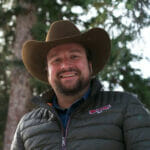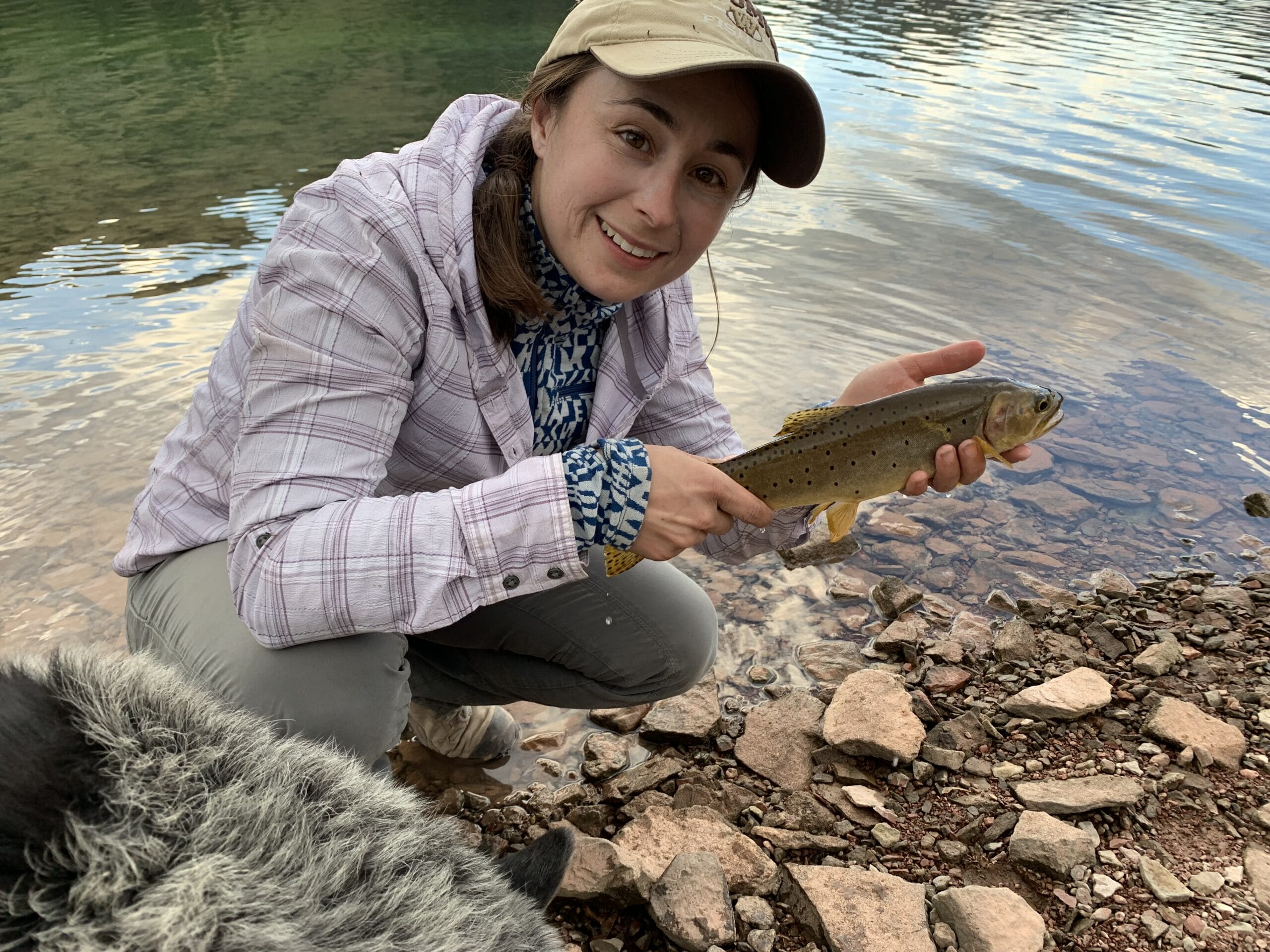Sitting atop the Colorado River Basin in southwest Wyoming, the Green River boasts incredible fisheries, red desert buttes, Seedskadee National Wildlife Refuge and Flaming Gorge National Recreation Area.
This basin stretches across the Cowboy State from the Wind River Mountain Range to the north to the Uinta Mountains to the south and the Sierra Madre Mountains to the east. These incredible areas abound with recreation opportunities while also harboring critical local industries such as cattle ranching, oil and gas development and trona mining.
Sitting at this nexus of recreation and industry is Jessica Lockwood, the Green River fisheries biologist for Wyoming Game and Fish (WYGF), who has worked on multiple projects with Trout Unlimited and has unique insight into the demands for this region—and the millions of people who rely upon its water downstream.
TU: Could you briefly describe what makes the Green River so special? And perhaps most importantly to our readers, what makes fishing here special?
JL: The quality of fish caught combined with lower use compared to other trout waters in the state makes the Green River a special fishery to manage and recreate on.
I moved to Green River in 2021 and that 4th of July, my husband and I decided to float the Green through Seedskadee National Wildlife Refuge. We saw only one boat at the launch that day; after that, it felt like we had the whole river to ourselves.
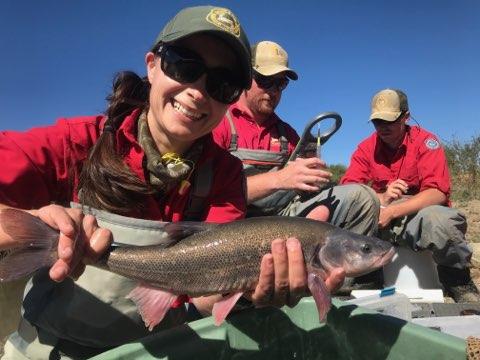
Use on the Green is slowly increasing; however, it is still substantially lower than other waters like the North Platte River near Casper.
Additionally, there are lots of other fishing opportunities in southwest Wyoming. For those looking to complete the Cutt Slam, they can knock the Bear River and Colorado River cutties off their lists by visiting one of our native cutthroat waters. For two consecutive years in a row, the state record tiger trout has come from Viva Naughton Reservoir near Kemmerer, Wyo. and before that it came from High Savery Reservoir south of Rawlins.
TU: What made you want to become a fisheries biologist?
JL: The idea of a career in freshwater fisheries sparked when I worked as a native trout conservation intern for Yellowstone National Park. There, I assisted on a variety of projects on Yellowstone Lake and around the park to monitor and restore native cutthroat trout populations. I loved living, working and recreating in Yellowstone so much that I knew I wanted to work in freshwater fisheries and that I wanted to stay in and near the Rocky Mountains.
That pivotal experience set me on the path to obtain my masters at the University of Wyoming where I became involved in the student subunit and Colorado-Wyoming Chapter of the American Fisheries Society.
It was during my time in Laramie that I met and got to know local fisheries biologists from Wyoming and Colorado. I was impressed by the work they did and the people they were, all of which strengthened my desire to become a fisheries biologist.
After graduating school, I went to work for WYGF as a fisheries technician and contract biologist which allowed me to travel and work in all four corners of the state. When I was offered a regional fisheries biologist position, it was a no-brainer to say yes on the spot.
TU: For those unfamiliar, what are your day-to-day responsibilities as a fisheries biologist?
JL: Day-to-day responsibilities vary greatly depending on the year and season.
Field work kicks off in the spring with night electrofishing in April to monitor trout abundance in the Green River. In May, I switch to monitoring trout populations in large reservoirs. I use gillnets set overnight to collect trend data (catch per unit effort) and biological data (length, weight) on trout populations in Fontenelle Reservoir. We also assist with the releases for the Trout in the Classroom program in May. In June, you’ll find me and the crew working on smaller reservoirs and ponds, monitoring those fisheries using a variety of gear, including gillnets and trap nets.
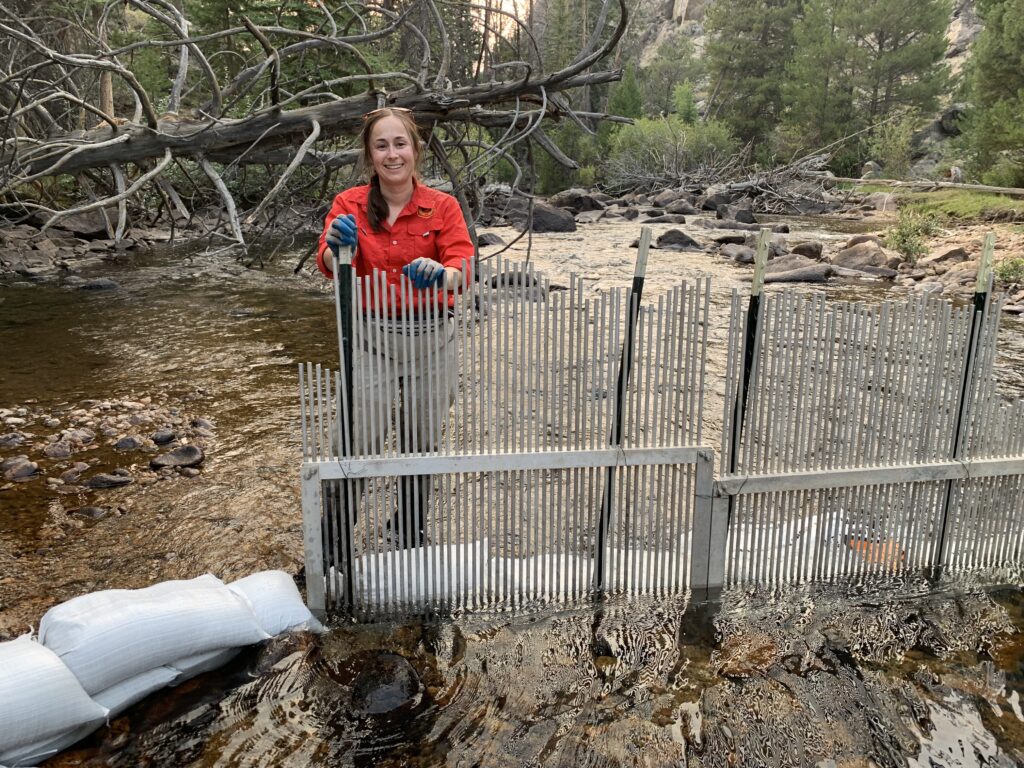
In addition to sportfish, WYGF is responsible for conserving populations of what we call SGCNs, Species of Greatest Conservation Need. In southwest Wyoming, we have several nongame SGCNs including roundtail chub, bluehead sucker and flannelmouth sucker. Most of my time in July and August is spent preparing to eradicate nonnative species that are negatively impacting these populations in Muddy Creek located south of Rawlins.
For the last few years, I have been working with partners like the Wyoming Wildlife Federation, private landowners, City of Green River, Trout Unlimited, the U.S. Fish and Wildlife Service and our Habitat and Access branch to expand float access along the Green River between Seedskadee National Wildlife Refuge and Flaming Gorge Reservoir. Two new boat ramps were established in the City of Green River in 2022, and three new boat ramps will be completed this September.
Every October, we complete trammel netting in our large reservoirs to monitor populations of burbot that were illegally introduced to the Green River Basin. Some of the burbot I collect during trammel netting, I pit tag and release back in Fontenelle Reservoir for the annual La Barge Ding-the-Ling held every winter, typically in February. These tagged Burbot are used to incentivize the harvest of this nonnative species. There is also plenty to be done around the office, including equipment maintenance, answering questions from the public, data analysis and report and grant writing.
TU: Given the variety of demands (e.g. industry, recreation, etc.) on this watershed, what are the challenges you see when trying to find the right balance for both fish and people?
JL: Water is a limited resource, but the demands for water are high and diversified, making water management and water use a big challenge for the watershed.
To provide an example, in the 1960s, Fontenelle Dam was constructed on the Green River as part of the Colorado River Storage Project. The dam forever transformed the Green River, creating Fontenelle Reservoir above it and a clear, cool-water river below it. This allowed for the creation of reservoir and tailwater trout fisheries; however, it also impacted the native fish assemblage of the Green River, which had evolved in a turbid, warm-water river system. In addition, dam operations allow humans to modify the volume and timing of water released downstream, resulting in altered flow regimes. Altered flow regimes can benefit both people and fish by protecting downstream cities from flooding in a very wet year or allowing for elevated water releases to buffer against increased water temperatures in a hot, dry summer. However, higher spring flows are required to maintain connectivity to lateral habitats (e.g. the flood plain) and for channel maintenance activities (e.g., flushing fine sediments from gravels and maintaining side channels). Additionally, changes in precipitation and hydrological regimes due to climate change that reduce the amount of water available are a challenge in themselves and intensify the challenges associated with water management and use.
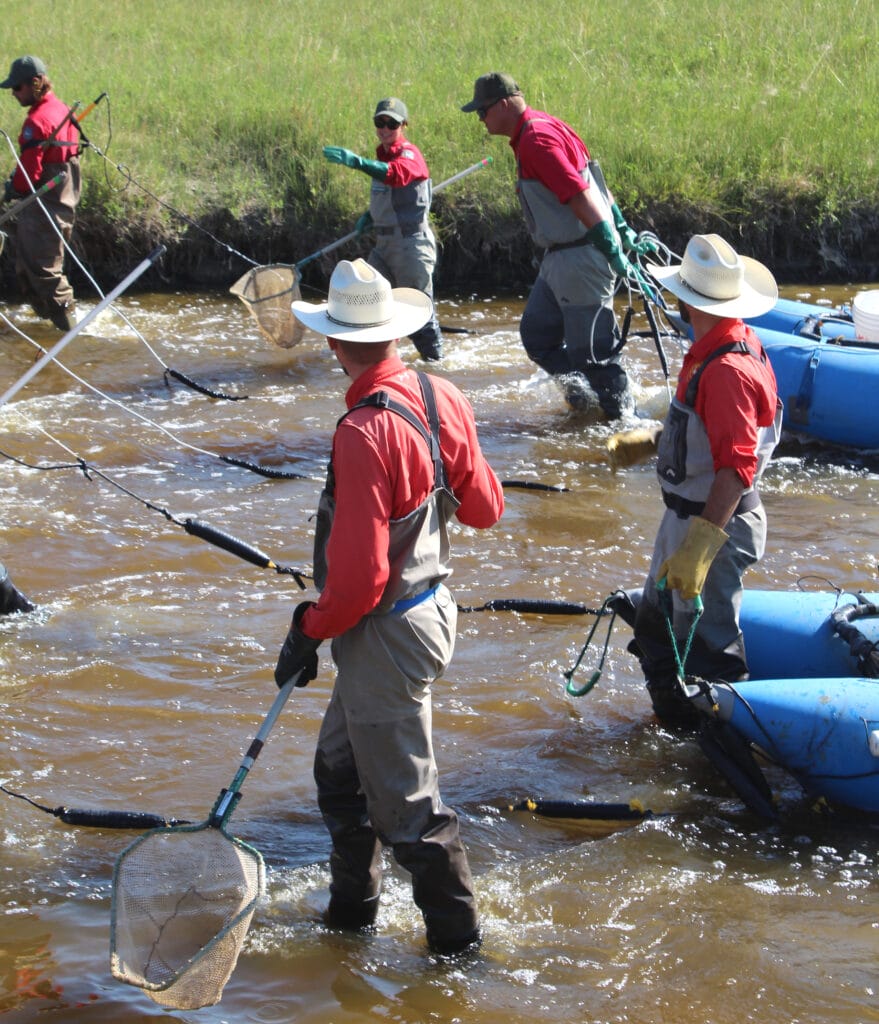
One last challenge is Aquatic Invasive Species (AIS). So far, we have been successful at stopping the spread of invasive mussels in Wyoming. However, if mussels become established in Fontenelle Reservoir or the Green River, it would have devastating impacts for both fish and people. Anglers and the public can do their part by following AIS regulations and the program’s main message: Clean, Drain and Dry all areas of the watercraft and any fishing equipment when recreating between bodies of water.
TU: Sitting atop the Colorado River Basin, your work carries additional importance to the health of the West’s fisheries and water tables. What do you feel are some of your most important conservation successes that benefit both local and downstream users?
JL: The Upper Muddy Creek subdrainage, located in the Little Snake River Basin, was identified as an aquatic wildlife conservation area in the 2017 State Wildlife Action Plan and is a priority conservation area for Colorado River cutthroat trout, bluehead sucker, flannelmouth sucker and roundtail chub. It is also the only subdrainage in Wyoming that still contains all four native species.
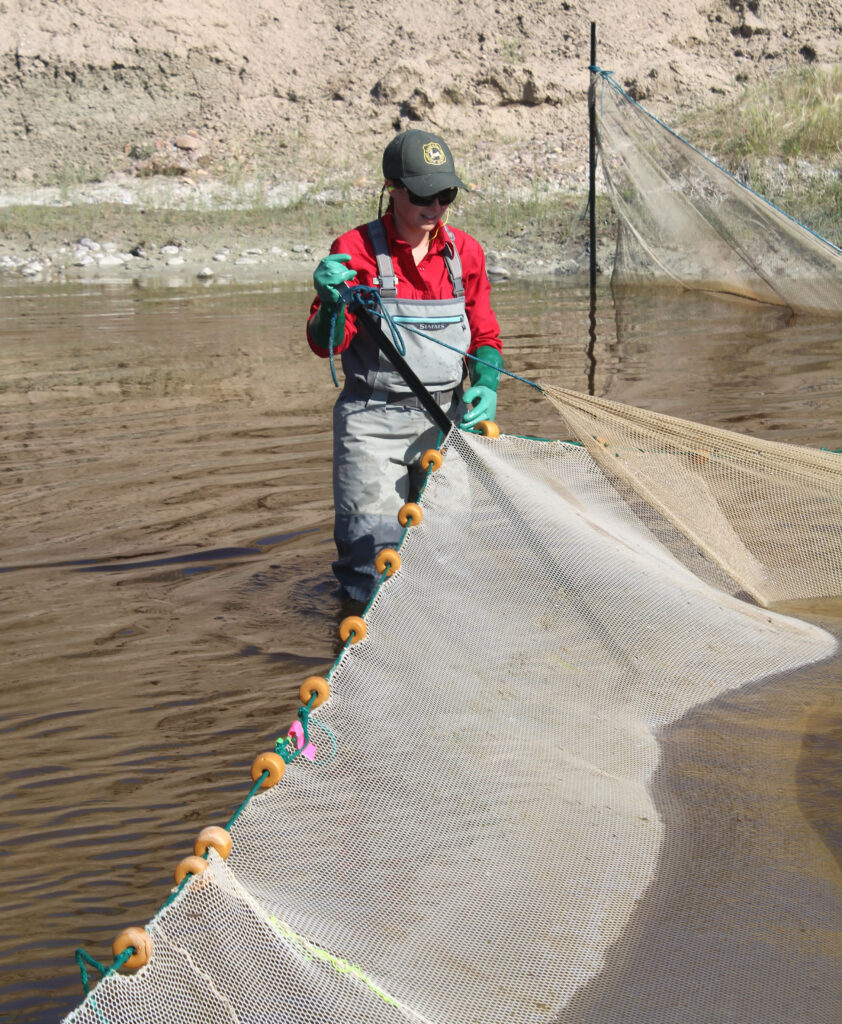
For decades, WYGF, alongside TU and other partners, has been working to restore the Upper Muddy Creek subdrainage. Nonnative species threaten the persistence of these fish in Muddy Creek; to date, nonnative fish have been eradicated from about 50 miles of Muddy Creek and its tributaries, thus restoring these waters to an all-native fish assemblage.
For the last few years, I have been gathering the data needed to eradicate nonnative fish species from the last 30+ miles of Muddy Creek. These last miles are located in remote, rugged terrain and make field work challenging to say the least. I want to thank TU and BLM, as they have played an integral role in helping gather this data.
Currently, our agency does not have a regional aquatic habitat biologist for the Little Snake River Basin, making the work completed by our partners much more critical to the conservation and restoration of these fishes and their habitats. TU and partners have led instream and riparian habitat restoration within the reaches utilized by the all-native fish.
This work uses man-made structures to mimic the function of beaver dams to entice beavers to recolonize restoration areas. The ultimate benefit of this type of restoration is to raise the water table and hold more water in the system which not only benefits the native fishes but also has positive impacts for both local and downstream users.
TU: And, finally, what is your favorite native trout and why?
JL: My favorite native trout is the Yellowstone Cutthroat Trout, because it was the first native trout I got to work with and the reason I became a fisheries biologist.


